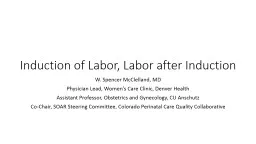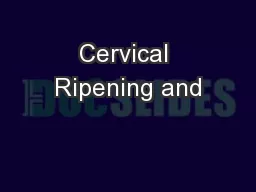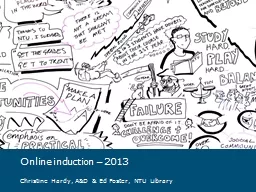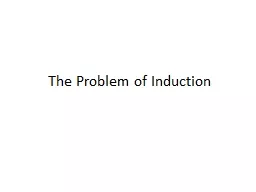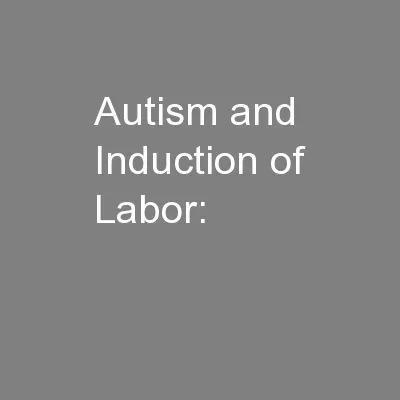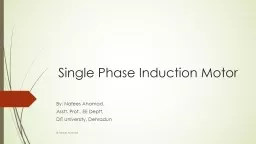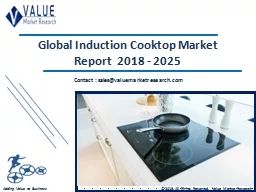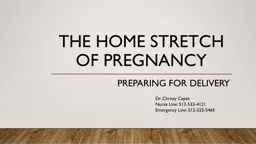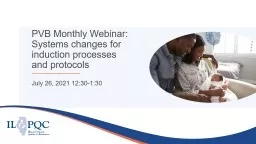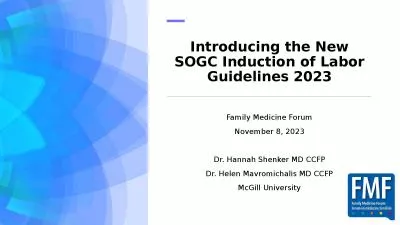PPT-Induction of Labor, Labor after Induction
Author : alyssa | Published Date : 2022-07-01
W Spencer McClelland MD Physician Lead Womens Care Clinic Denver Health Assistant Professor Obstetrics and Gynecology CU Anschutz CoChair SOAR Steering Committee
Presentation Embed Code
Download Presentation
Download Presentation The PPT/PDF document "Induction of Labor, Labor after Inductio..." is the property of its rightful owner. Permission is granted to download and print the materials on this website for personal, non-commercial use only, and to display it on your personal computer provided you do not modify the materials and that you retain all copyright notices contained in the materials. By downloading content from our website, you accept the terms of this agreement.
Induction of Labor, Labor after Induction: Transcript
Download Rules Of Document
"Induction of Labor, Labor after Induction"The content belongs to its owner. You may download and print it for personal use, without modification, and keep all copyright notices. By downloading, you agree to these terms.
Related Documents

